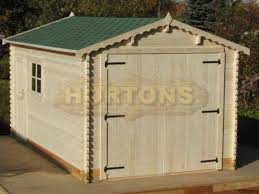
Your garage can be used for many purposes, including storage, as well as as an auto shop or gym. One way to do this is by putting up shelves over your garage door or other areas of the garage.
Shelves above Garage Doors
For large items, such as gardening equipment and sports gear, shelves can be placed above your garage doors. They can be used as a place to store tools and household supplies, as they also serve as a convenient storage option.
They come in many sizes and will fit almost any garage or basement. They come with wheels that can be easily moved. These units are typically cheaper than wall mounted units and take up less floor space.
These garage shelves with doors are great for any budget
Ace Hardware has the best garage storage shelves with doors. They are usually sold in sets of four to five units. These shelves offer less shelf space than other options, but are easier to assemble and include all the hardware needed.

You can also find garage shelving with heavy-duty construction that can support heavier items like chainsaws or leaf blowers if you are willing to spend more. You can have locks installed to make sure your garage is secure.
They are made to withstand the elements and will not rust or mildew as easily than other shelving units. They are an excellent choice if you live near a storage unit that is subject to heavy rains or if you intend to park your vehicle next door.
Some shelving models can either be attached to the wall or suspended from the ceiling. Others can be placed freestanding wherever you need them. Some shelves are built to be used in corners and against the walls.
Regardless of how you choose to put up your garage storage shelves, they'll save you a lot of time and energy when you're trying to find what you need. If you have the time and desire to work hard, you can make your shelves from wood or any other material.
This is a great way save money and make your own garage shelves. Although they are more labor intensive than other types, they can be worth it if your skills and time allow.

Garage storage shelves with doors that are sturdy and easy to assemble are the best. They are made to withstand the elements and can withstand extreme abuse without rusting, mildewing or fading.
These 10 DIY ideas will help you transform your garage into a clutter-free space. These 10 DIY ideas are sure to get you motivated to clean out your garage, organize it and store it.
FAQ
Is $30000 enough to remodel a kitchen?
You can expect to pay anywhere from $15000-$35000 for a kitchen overhaul, depending on how much money you have available. You can expect to spend more than $20,000. If you are looking for a complete overhaul of your kitchen, it will cost more. For less than $3000, you can update appliances, add lighting, and replace countertops.
An average cost for a complete renovation is between $12,000-$25,000. There are ways to save money but not sacrifice quality. A new sink can be installed instead of replacing an older one. This will cost you approximately $1000. You can also purchase used appliances at half of the cost of new.
Kitchen renovations can take longer than other types projects so plan ahead. It doesn't make sense to start work on your kitchen when you realize half way through that time is running out.
Start early. Start by looking at different options and getting quotes from contractors. Next, narrow your options based on price and availability.
Once you've found a few potential contractors, ask for estimates and compare prices. Not always the best choice is the lowest-priced bid. It's important to find someone with similar work experience who will provide a detailed estimate.
Remember to include all the extras when calculating the final cost. These might include extra labor costs, permit fees, etc. You should be realistic about what you can spend and stick to your spending budget.
Don't be afraid to tell the contractor what you think about any of the quotes. Tell the contractor why you don't like the initial quote and offer another chance. Don't let pride get in the way when you save money.
What would it cost for a home to be gutted versus what it would cost to build one?
The process of gutting a house involves removing all contents inside the building. This includes walls, floors and ceilings, plumbing, electrical wiring and appliances. It's often necessary when you're moving to a new house and want to make changes before you move in. Gutting a home is typically very expensive because so many things are involved in doing this work. Depending on your job, the average cost to gut a home can run from $10,000 to $20,000.
The process of building a home involves the construction of a house from one frame to another. Next, the builder adds walls, flooring and roofing. This is usually done after buying a lot of lands. Building a home can be cheaper than gutting. It usually costs around $15,000-$30,000.
When it comes down to it, it depends on what you want to do with the space. If you want to gut a home, you'll probably need to spend more because you'll be starting over. But if your goal is to build a house, you won't need to disassemble everything and redo everything. You can build it as you wish, instead of waiting to have someone else tear it apart.
What should my cabinets look like?
It all depends on if you are thinking of selling or renting your home. You'll need to remove the cabinets and refinish them if you plan to sell. This gives buyers the impression that they're brand new and helps them envision their kitchens after moving in.
However, if you want to rent your house, you should leave the cabinets alone. Tenants often complain about having to clean up dishes and fingerprints from previous tenants.
You can also consider painting the cabinets to make them look newer. It is important to use a high quality primer and paint. Low-quality paints may crack over time.
Are there any savings on a remodel of a bathroom or kitchen.
Remodeling a bathroom or kitchen is an expensive proposition. It might be more cost-effective to upgrade your home than you think, given how much you spend each month on energy bills.
It is possible to save thousands every year with a simple upgrade. Simple improvements such as insulation of walls and ceilings can lower heating and cooling costs up to 30 percent. Even a simple addition can increase comfort and reduce resale costs.
Remember to choose durable and easy-to maintain products when you are planning your renovations. Material like porcelain tile, stainless-steel appliances, and solid wood flooring are more durable and can be repaired less often than vinyl or laminate countertops.
You may also find that replacing old fixtures with newer models can help cut utility expenses. For example, installing low-flow showerheads and faucets can lower water usage by up to 50 percent. Replacing inefficient lighting with compact fluorescent bulbs can cut electricity consumption by up to 75 percent.
What are the main components of a full kitchen renovation?
A complete kitchen remodel involves more than just replacing a sink and faucet. Cabinets, countertops, appliances and lighting fixtures are just a few of the many options available.
Full kitchen remodels allow homeowners to modernize their kitchens without the need for major construction. This means that there is no demolition required, making the process easier for both homeowner and contractor.
Renovating a kitchen can involve a range of services including plumbing, heating and cooling, painting, and even drywall installation. Complete kitchen remodeling may require multiple contractors, depending on how extensive the renovation is.
The best way to ensure a kitchen remodel goes smoothly is to hire professionals with experience working together. Kitchen remodels are complex and can be delayed by small issues. DIY projects can cause delays so make sure you have a backup plan.
How much does it cost for a complete kitchen renovation?
You might be wondering how much it would cost to renovate your home.
The average kitchen renovation cost is between $10,000-$15,000. There are many ways to save money and improve the overall feel of your kitchen.
Planning ahead is a great way to cut costs. This includes choosing the design style and colors that best suits your budget.
An experienced contractor can help you cut down on costs. A professional tradesman knows exactly how to handle each step of the construction process, which means he or she won't waste time trying to figure out how to complete a task.
It is best to decide whether you want to replace your appliances or keep them. The cost of replacing appliances can increase by thousands of dollars in a kitchen remodel project.
Additionally, you may decide to purchase used appliances rather than new ones. Because you don't need to pay for installation, buying used appliances can help you save some money.
Finally, you can save money by shopping around for materials and fixtures. Many stores offer discounts during special events, such as Black Friday or Cyber Monday.
Statistics
- About 33 percent of people report renovating their primary bedroom to increase livability and overall function. (rocketmortgage.com)
- According to a survey of renovations in the top 50 U.S. metro cities by Houzz, people spend $15,000 on average per renovation project. (rocketmortgage.com)
- $320,976Additional home value: $152,996Return on investment: 48%Mid-range average cost: $156,741Additional home value: $85,672Return on investment: (rocketmortgage.com)
- Attic or basement 10 – 15% (rocketmortgage.com)
- 5%Roof2 – 4%Standard Bedroom1 – 3% (rocketmortgage.com)
External Links
How To
How to Remove Tile Grout From Floor Tiles
Most people don’t know what tile grouting is. It is used for sealing the joints between tiles. There are many different types of grout today. Each has its own purpose. Here we will show you how to remove tile grout from floor tiles.
-
Before you begin this process, it is important to make sure you have all of the necessary tools. A grout cutter, grout scraper and some rags are all essential.
-
Now you must clean any dirt or debris under the tile. Use the grout knife to remove the grout. Scrape away any remaining grout. You must be careful not to scratch any tiles.
-
After cleaning everything, take out the grout scraper. Use it to clean up any grout left behind. If you don't have any grout, you can continue to step 4.
-
Once you've done all of the cleaning, you can move onto the next step. One of the rags can be used to soak in water. Make sure that the rag is completely wet. When the rag has become soaked, wring it out, so that excess water stays inside the rag.
-
Place the wet paper towel at the joint of the tile and wall. The grout will begin to crumble if you press down hard on the rag. Slowly pull your rag towards yourself and continue to pull it back and forth, until all grout is gone.
-
Repeat steps 4 to 5 until grout is gone. Rinse the ragout. Repeat the process if necessary.
-
Once you have finished removing all the grout, wipe down the surface of the tiles with a damp cloth. Let dry thoroughly.